Every 80 to 90 years, society reinvents itself. Old systems collapse, and new ones take their place.
The Industrial Revolution. The electrification and infrastructure boom after World War II. These weren’t just incremental changes — they were tipping points that launched new eras. Times where transformative technologies redefined what’s possible.
Also times when society had to figure out how we were going to adapt.
So here we are.
Standing in one of those moments — again. AI, clean energy, and bioengineering aren’t just tools. They’re the foundations of the next cycle. Analysts like ARK Invest suggest they could compress centuries of progress into a single generation. (No need to worry about getting bored now 😅.)
But let’s look back.
I first felt this ripple back in 2009, when social media suddenly rewired how we connect. Facebook, LinkedIn, Twitter — it was obvious the old way of doing business was gone. I realized adaptability wasn’t optional. It was survival.
Fast-forward to November 2022. OpenAI released ChatGPT. Another tipping point. And just like the Industrial Revolution or the internet boom, it marked the start of a new age.
But here’s the truth: AI isn’t the first revolution, and it won’t be the last. The real skill is reinventing yourself again and again as the world changes.
Unlike past revolutions, today, information spreads in hours, not months. We’ve never been so tuned in—or so overwhelmed. With opportunity comes anxiety, and more leaders and high performers are asking:
“Am I going to lose my job?”
“Will I be replaced?”
This fear is a paradox—a grey area of yes and no.
But what struck me most about the AI phenomenon wasn’t just the job fears. It was what this meant for us as humans.
Much like I saw in 2009, we are at a point where we need to reinvent ourselves. And as times change, we have to lean into the qualities that make us human:
→ Empathy
→ Creativity
→ Resilience
→ Adaptability
→ Collaboration
→ Critical thinking
→ Lifelong learning
→ Emotional intelligence
At the same time, you can’t put your head in the sand.
AI isn’t going anywhere.
AI isn’t here to replace us. It’s an opportunity—a chance to do more, learn more, and be more.
And this is the essence of Personal Innovation.
Personal Innovation Defined: Reinvention as Your Competitive Edge
Yuval Noah Harari once said:
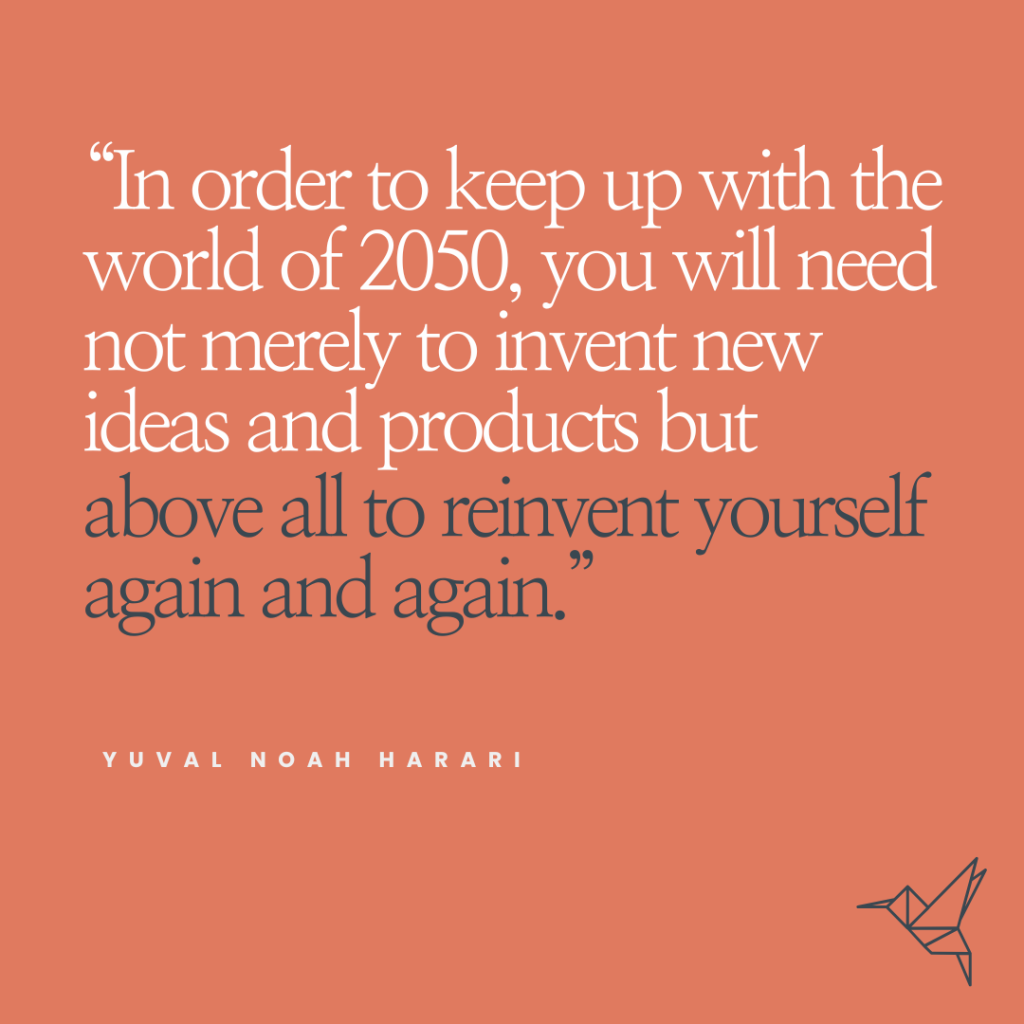
“In order to keep up with the world of 2050, you will need not merely to invent new ideas and products but above all to reinvent yourself again and again.”
If technology is changing this fast, then you have to find ways to keep up.
In business, that’s called innovation. Apple did it when Steve Jobs returned: they simplified and reinvented.
If a company worth a trillion dollars constantly reinvents itself, why can’t you?
Personal Innovation is applying the principles of innovation—novelty, value creation, execution, and improvement—to yourself.
You’re worth it, aren’t you?
It’s about embracing change, seeking new skills, and building systems that make you thrive.
And here’s the spiky truth: experience without adaptation is just one year repeated ten times.
But how do these principles apply to us?
Let’s reframe innovation for a person instead of an organization.
Innovation can be thought of as the process of turning ideas into practical solutions that create meaningful value—whether in products, services, or in how we work and live.
So in a nutshell, Innovation is about novelty, value creation, execution, and improvement.
Let’s break those down into what that looks like for you.
- Novelty: Trying new ways of working, learning, and living. Can you work in a more agile way? Could you learn A.I. or how to better coach your team? Maybe you could become a creator.
- Value Creation: Innovation should provide value to yourself, your family, and your professional network. What if you could become someone who exudes value in your professional life. Create better relationships. Leverage A.I. to improve your productivity, or impress your partner by planning your next vacation 😉.
- Improvement: At the heart of innovation is improvement—whether it’s increasing productivity, improving health, or leveraging technology. Improvement is about continually raising your own standards—finding ways to work smarter, feel better (physically and mentally), and expand your skills so your results improve across every area of life.
- Execution: Without action, ideas are just that—ideas. Innovation requires massive action. The same is true for personal growth.
Personal Innovation is the ultimate form of self-leadership—choosing to actively shape your life by adopting new approaches and continuously evolving to meet new demands. Becoming someone who is ready for anything that gets thrown at you. Steadying your mind, designing your life, and adapting as opportunities and life unfold.
The 5-Step System to Reinvent Yourself
Now that we’ve defined innovation, the question becomes: how do you apply it to yourself? Reinvention can feel abstract, but it doesn’t have to be. It’s not random—it’s systematic. Here’s a five-step method leaders, aspiring leaders, and high performers can use to thrive in times of change:
Step 1: Clarity – Find Clarity and Your Human Advantage
There’s a lot of friction in the world as AI engulfs us. Talk of AI taking jobs, and we won’t get into the Terminator Skynet level conversations of the future.
Here’s the truth. Work is going to change. Jobs will be lost. What matters most is how you react.
Daniel Goleman introduced the term Emotional Intelligence in the 1990’s. This shifted how leaders thought about human value. Suddenly, companies realized that IQ and technical skills could get you hired, but EQ (self-awareness, empathy, clarity of purpose) made you indispensable.
In an AI world the most important thing you can do is figure out who you are, what your strengths are, and what value you bring to the world. Find your unique human edge.
At work, figure out what the things are in your day-to-day role and what you think AI could potentially take over. Do a values audit of your job. How much of your time is taken up by tasks that AI could handle? I’m willing to guess that it will be upward of 50% for many of us knowledge workers. That’s not something to be scared of. That’s an opportunity. A chance to recognize what your unique value is. That might be emotional IQ or storytelling. But now you know what you can delegate to technology and what human elements to double down on to make you irreplaceable.
Clarity isn’t about having all the answers — technology will do that; rather it’s about knowing your unique value.
Why this matters now: In an AI-accelerated world, everything that can be automated will be. Without clarity on your unique human value, you’ll compete with machines on their terms—and lose.
Momentum Move: Take three minutes and write down your top three daily tasks. Circle the one AI could handle 80% of, and underline the one only you—with your judgment, empathy, or creativity—can do. You’ve just spotted your edge.
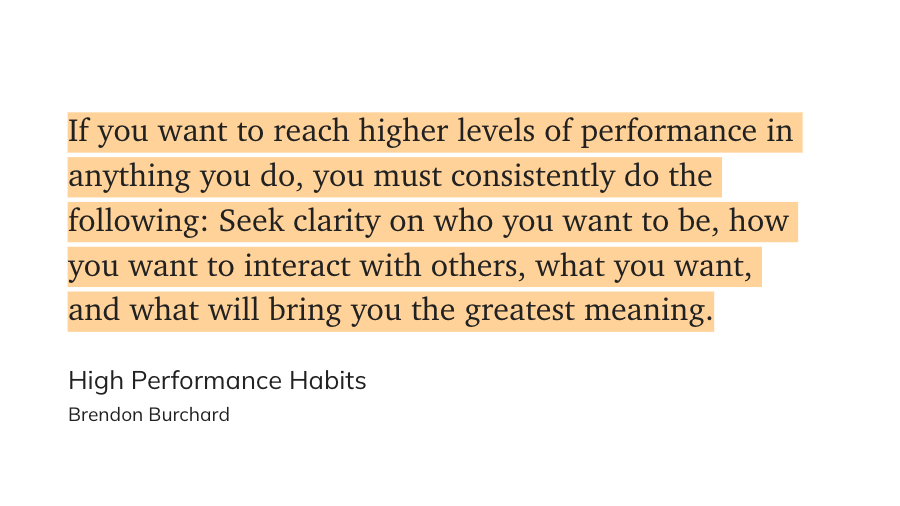
Once you know your unique edge, the next question is: does your work align with what you truly value?
Step 2: Purpose – Reconnect Your Work to What Matters
When I lost my job a couple years ago I had a chance for a reset. The truth was that I was already feeling dead inside despite a cushy job and benefits. That time gave the chance to dig into things like my purpose and values. Really thinking about what I wanted in and from the work that I do.
I remembered a time when work excited me. When I jumped out of bed looking forward to tackling the challenges ahead. (This was obviously before kids 😅.)
Now this doesn’t mean you need a new job. But it does mean finding out what’s important to you and looking for the places that align with your values to bring you a new perspective on what it is that you do. Purpose isn’t about finding a new job; it’s about finding new meaning in the job you have.
Reed Hastings, the former CEO of Netflix, doubled down on values and created a behemoth built on innovation, freedom and agency. Many still reference the famous Netflix Culture Deck today. And as you scroll for your next binge, remember: the Netflix Culture Deck was built on values, not just entertainment. It worked out pretty well.
Why this matters now: AI can optimize for efficiency, but it can’t optimize for meaning. Your purpose becomes your competitive advantage—it’s the ‘why’ behind the work that no algorithm can replicate.
Momentum Move: Pick your most boring regular task. Write down three ways it helps a real human. Then share one of those insights with a colleague or friend. Purpose isn’t private—watch how energy shifts when meaning is voiced.
With purpose defined, the challenge becomes sustaining it through consistent action.
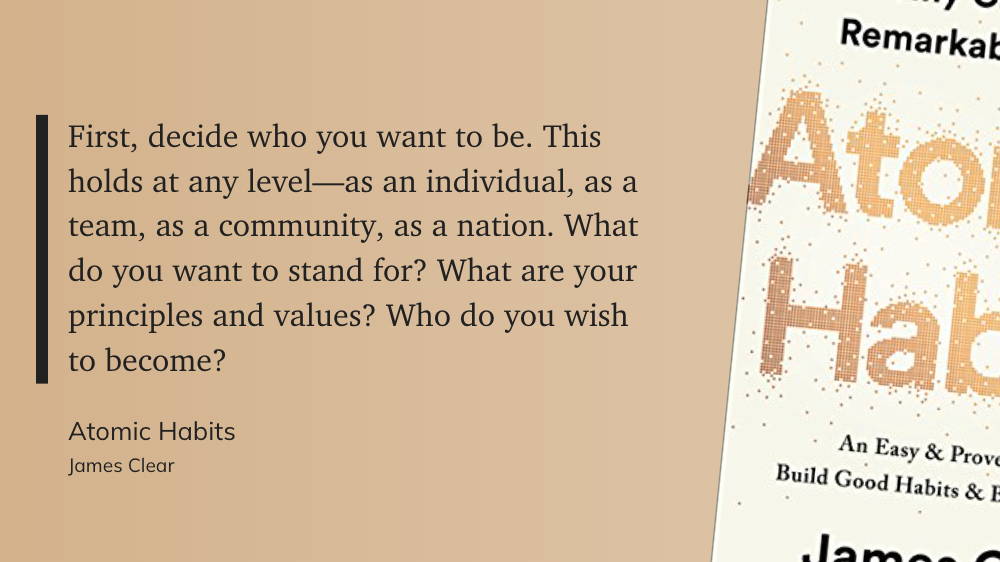
Step 3: Progress – Build Systems That Work
There’s a reason why I called this personal “innovation.” Not just to freshen up personal growth, but to add a systematic approach to reinventing yourself. Gone are the days of a one job, one company career lasting 40 years. Now we have to be prepared to change directions whenever necessary.
James Clear wrote the mega-best selling book Atomic Habits. It will remain one of the most important books you’ll read in the decade ahead. Learning new skills needs to be a habit that you build. It’s no longer a one and done activity. In Atomic Habits James talks about habit stacking: attaching new behaviors to existing ones. For example, every morning with coffee, spend 15 minutes on a new digital skill. Just 15 minutes. It’s not about intensity; it’s about consistency. Systems beat goals because systems work even when motivation doesn’t.
Take when Satya Nadella took over at Microsoft. He rebuilt that culture on systematic learning. He encouraged curiosity, experimentation, and constant adaptation. Within five years, Microsoft was again the most valuable company in the world.
Why this matters now: The half-life of skills you learn is shrinking. You need learning systems that run on autopilot, not heroic efforts that depend on perfect conditions.
Momentum Move: Choose one skill you want to develop. Attach a 10-minute learning block to a daily habit (coffee, commute, lunch). Then text a friend or colleague: “Hold me to this for 21 days.” Systems beat motivation—but accountability supercharges systems.
Progress builds momentum, but momentum without confidence rarely inspires others.
Step 4: Confidence – Develop Authentic Leadership
Almost everyone wrestles with imposter syndrome. If you don’t, chances are you’re in the 7% of the population who lean toward narcissism, Machiavellianism, or psychopathy. For the rest of us, self-doubt is a feature, not a bug. It shows up most when we’re facing new challenges, stepping into bigger roles, or navigating change.
The paradox? You can’t think your way into confidence. Confidence is the residue of action. Each time you act, you earn a win. Each win builds proof. And proof compounds into confidence. If you want more confidence, start tracking your progress—use a simple scoreboard or weekly review to see how far you’ve come. Tracking your progress boosts confidence because it gives you visible proof of progress.
But confidence is more than a feeling—it’s a practice:
- Integrity over status: As Sam Walker writes in The Captain Class, “One of the great paradoxes of management is that the people who pursue leadership positions most ardently are often the wrong people for the job.”Authentic confidence is anchored in service to the mission, not in external validation. The best leaders are motivated by impact, not prestige.
Authentic leadership isn’t about having all the answers. It’s about asking better questions, being honest about what you don’t know, and creating an environment where the whole room gets smarter.
Why this matters now: In an AI-driven world, information and recall are infinite. What can’t be automated is your ability to project calm in uncertainty, inspire belief in others, and translate ambiguity into momentum. That’s where confidence shows up as a leadership edge.
Momentum Move: Identify one area where you feel like an imposter. Commit to asking a thoughtful question in your next meeting or conversation in that area. Vulnerability builds confidence the moment you see others lean in.
Confidence makes you credible; impact makes you memorable.
Step 5: Impact – Create Lasting Influence
Impact isn’t about the title on your LinkedIn profile or the size of your paycheck. It’s about the ripple effects of your actions. The people you influence, the culture you shape, and the legacy you end up leaving behind.
Ryan Holiday talks about this in his book, “Right Thing, Right Now.” The Coaching Tree. In sports, a coach’s success isn’t measured only in wins, but in the network of people (players, assistants or anyone in that organization) they’ve mentored who go on to become successful themselves. Great leadership isn’t what you achieve alone, but what you enable in others. The true test of impact is how wide and strong your coaching tree grows over time.
To build that coaching tree though you need courage and you need to be able to build trust and lasting influence.
Impact requires courage—courage to share your ideas, to take bold action, and to stand up for yourself and others, even when there’s uncertainty or fear. And courage is not an occasional act; it’s a choice, a trait of will. But courage alone isn’t enough, you also have to consciously develop influence with those around you. Influence is how courage turns into impact—because without others believing in and supporting your efforts, lasting achievement is nearly impossible.
Charlotte Otter captures it perfectly in her book We Need New Leaders: “The world needs leaders who inspire trust, champion authenticity and steer their organizations with both vision and responsibility.” That’s what it looks like to create influence that lasts—impact that outlives any single role, company, or project.
Why this matters now: AI may change jobs, industries, and the way we work—but it cannot replace the ripple effect of human influence. When you build others up, you multiply your impact far beyond what any single achievement can measure.
Momentum Move: Think of one person you can mentor or support this week. Send them a quick message right now: “Hey, I’ve been thinking about you. How can I help you take the next step?” Impact begins in conversations you start today.
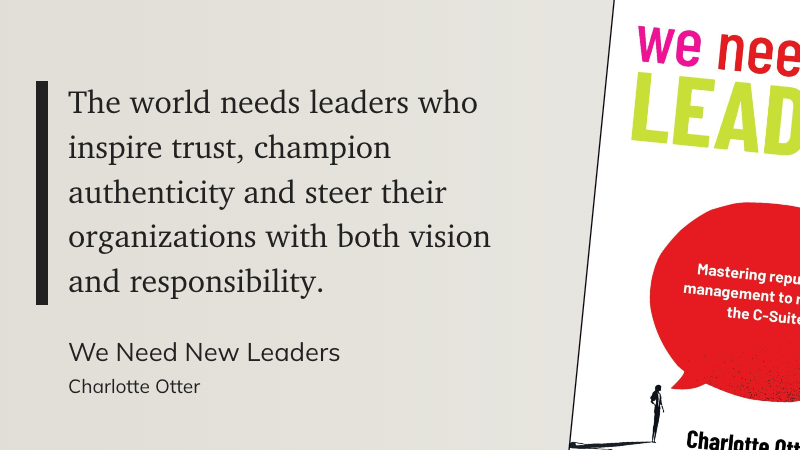
Together, these five steps create a system for thriving.
Clarity keeps you grounded.
Purpose keeps you motivated.
Progress keeps you moving.
Confidence makes you credible.
And Impact ensures your growth ripples far beyond yourself.
This is what Personal Innovation looks like in action — not a one-time reset, but a repeatable method for reinventing yourself whenever the world shifts.
And while the system gives you direction, the daily choices you make are what bring it to life.
So here are ten principles that you can start with on your journey of reinvention.
The Personal Innovation Manifesto
10 Principles to Guide Your Reinvention in the AI Era
- Adopt a Growth Mindset. Every challenge is an opportunity. Adapt or repeat the same year ten times. Growth isn’t luck — it’s practice.
- Learn relentlessly. Act immediately. Learning without action is just expensive entertainment. Insight only matters when it becomes output.
- Protect your energy. Your body and mind are the foundation of your potential. Burnout breaks more dreams than failure ever will.
- Experiment boldly. Step outside your comfort zone. Failure isn’t final — it’s feedback. The faster you test, the faster you grow.
- Adapt fast. The world changes daily. Adaptation isn’t optional — it’s survival. The slower you change, the faster you become obsolete.
- Give value freely. Share your skills to connect and inspire — not just to self-promote. Your value grows when others grow with you.
- Use technology wisely. Leverage it to enhance life, not distract from it. Master the tools, or they will master you.
- Build meaningful connections. Seek out relationships that challenge and support you. Community compounds growth; isolation kills it.
- Live with intention. Align choices with your values. Don’t drift — design your future. Small intentional steps beat aimless sprints.
- Create lasting impact. Self-improvement is the start. Legacy comes from lifting others. Influence multiplies when it outlives you.
Personal Innovation is not just a philosophy—it’s a commitment to being ready for whatever comes next. AI is today’s test case. Tomorrow, it will be something else. The constant is not the technology—it’s your ability to reinvent yourself faster than change.
You have the tools. Now it’s time to act.
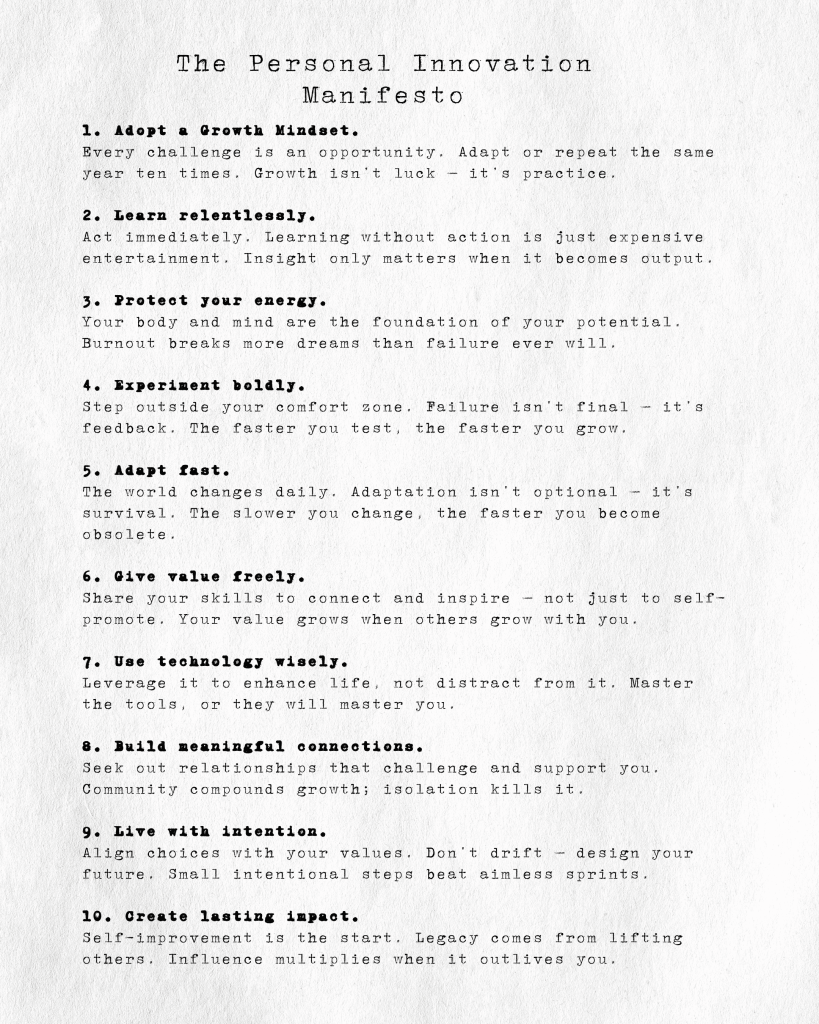
FAQ
Q: What is Personal Innovation?
A framework for applying the principles of innovation—novelty, value creation, execution, and improvement—to yourself, so you can adapt faster than change.
Q: Why is Personal Innovation important in the AI era?
Because technology will keep evolving. The only sustainable skill is the ability to reinvent yourself as new tools and systems emerge.
Q: What skills will remain valuable in an AI-driven world?
Empathy, creativity, resilience, adaptability, collaboration, critical thinking, lifelong learning, and emotional intelligence.
Q: How can I start practicing Personal Innovation today?
Follow the five-step system: Clarity, Purpose, Progress, Confidence, and Impact. Each step includes a “Momentum Move” to get started right away.





